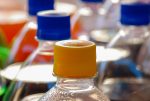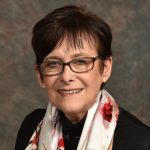We were collectively shocked by the Covid-19 crisis that disrupted the food industry. We didn’t see it coming and we weren’t prepared for the long-lasting, widespread repercussions of that crisis, including product and labor shortages, supply chain disruptions and record-setting inflation.
Many food businesses were reliant on certain suppliers, and if they couldn’t deliver necessary products, companies either had to go without or scramble to find an alternate solution. As an industry, we were reactive—not proactive—to the pandemic and the ensuing fallout.
Now that we have some perspective, a big takeaway is that food businesses need to have better backup plans to address supply chain disruptions, product shortages and delays. This is especially important because:
- Extreme weather is causing crop failures, livestock deaths and suboptimal soil conditions, resulting in more world hunger. Extreme drought conditions are destroying produce out west, including in California, a region that grows significant amounts of produce to ship nationwide. The Midwest, which produces approximately three-quarters of our country’s corn supply, is facing the opposite problem, as frequent floods wash away precious soil. Europe’s record-setting heat is torching vegetation, while India is pausing exports because of a severe heat wave.
- The ongoing Ukraine/Russian war is predicted to give rise to a “food catastrophe.” Our global food system relies on a few big food commodity exporters, and Ukraine and Russia are two of the biggest. Together, these two countries supply approximately 60% of the global sunflower oil production—a product that goes into hundreds of consumable goods. It is a significant threat to the global food supply that so many of these exports have stalled.
- Soaring inflation and resulting record high food prices are putting food out of the reach of many, leading to a worldwide rise in food insecurity, leading to increased hunger and malnutrition. The number of food insecure people is predicted to grow globally from 440 million to 1.6 billion, and nearly 250 million people are facing famine.
- The ongoing labor shortage is contributing to disruptions and food waste all along the supply chain. Crates of perishable foods are being left to rot in shipping containers, warehouses and trucks because there aren’t enough workers to get them safely to their final destinations.
Below are several steps food brands can take to address and prepare for these ongoing threats to the supply chain.
Use tech tools to manage your supply chain. Today’s digital solutions allow you to audit and evaluate your supply chain’s sustainability and resilience. These innovative tools can help you get a better handle on your supply chain by organizing supplier certifications into a system that offers better visibility and is easier manage.
Embrace sophisticated technologies. Advances in artificial intelligence (AI), robotics and other technologies may help solve some of our most pressing supply chain challenges. For instance, when the Suez Canal was blocked in 2021 it halted all shipments through that major passageway, causing a supply chain crisis. AI rerouted ships to avoid the blockage, so food deliveries could continue via a detour. AI can also monitor shipments to ensure safety and quality, notifying suppliers and buyers about any safety breaches.
The FDA’s New Era of Smarter Food Safety calls for a broader approach to food safety and traceability, and AI can help achieve those goals. Moving forward, AI will be instrumental in increasing transparency all along the supply chain, providing end-to-end visibility and predicting the path of foodborne outbreaks.
Develop back up plans. How are your suppliers pivoting to manage the simultaneous threats against our global food supply? How are they preparing for climate change? What will they do if they can’t get necessary produce from California, corn from the Midwest or grain from Ukraine? How will they recruit and retain enough labor to deliver necessary products safely to their final destinations? It’s smart to find backup suppliers, especially those closer to home, to ensure an uninterrupted supply of foods. Work with suppliers that are focused on solutions, safety and quality, and keep careful track of each supplier’s safety certifications.
Consider vertical farming. Increasingly, companies are looking for alternate supplier and agriculture solutions, such as vertical farming, which grows crops closer to their final destinations. Growing foods closer to their final destination helps reduce food deserts and safety risks, boost sustainability and minimize food wastage. Vertical farms are typically indoor climate-controlled spaces. These growing conditions protect crops from severe weather, and offer a viable solution to bypass a variety of current issues from the climate crisis to supply chain headaches.
Pivot to agroecological farming. Agroecological farming practices mitigate climate change and prioritize local supply chains. Using this approach, farmers adopt agricultural techniques based on the local area and its specific social, environmental and economic conditions. Agroecology focuses on sustainability, working to reduce emissions, recycle resources and minimize waste. Those that embrace this farming approach believe that traditional farming often faces—and contributes to—a variety of problems, including soil degradation and excessive use of pollutants. Intensive, traditional farming approaches typically focus on short-term output vs. long-term sustainability, which exhausts many natural resources, local resources and wildlife. Agroecological farmers adhere to strict standards that support animal welfare, fewer pesticides and antibiotics, healthier soil and no GMOs.
Be proactive. In hindsight, we should have been more proactive during the Covid-19 crisis, developing backup plans for the huge supply chain disruptions that were headed our way. Before the pandemic, we couldn’t possibly have anticipated the ramifications of a disrupted supply chain and we didn’t understand the need to have backup plans in place for alternative food sources and waste reduction. Today, we have a more realistic perspective and recognize the need to plan ahead for any eventuality.
Our food supply is being threatened by simultaneous crises—from climate change to war—so we must be proactive, prepared, resilient and flexible in developing a solid Plan B.




















